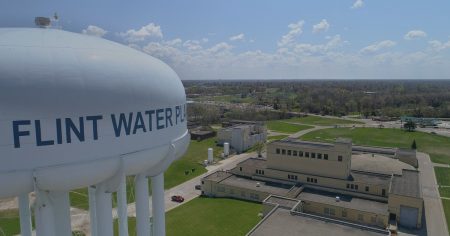In 2014, Flint, Michigan changed water sources…
but didn’t properly treat the new water to prevent corroding water pipes resulting in eroded lead pipes and contaminated water across the city.
Officials denied that the water was unsafe for more than a year…until activism by Flint residents brought national attention and pressure..
In 2016 the city began to replace the lead pipes..
But there was a huge problem..
They didn’t know where the thousands of lead pipes..
To give workers the best chance of finding lead…
University of Michigan researchers turned to a form of artificial intelligence, AI that searches large collections of data looking for patterns..
It’s called “machine learning“.
Using census data and city records..
the algorithm makes conclusions based on relationships it finds in the data..
The more information the AI model got about the pipes in Flint..the more accurate the predictions became.
The city of Flint started using the AI model to prioritize digging..
at homes that most likely had lead pipes
In 2016-2017, they found lead pipes..
about 81% of the time
But many residents objected to prioritizing some homes over others.

In 2018, Flint hired a California-based contractor…to accelerate replacement of lead pipes
They stopped using the AI to target specific homes…
and took a more blanket approach, inspecting neighborhoods across the city
But only found lead in about 15% of the homes inspected
A coalition of activists sought a court order..
demanding that the city first inspect homes most likely to have lead
A settlement required the city to use the AI model
Now the hit rate has climbed back up, to over 70%
Still, many residents want physical confirmation that their pipes are safe
More than 8,000 lead pipes have been replaced so far..
No one knows exactly how many remain..
Researchers estimate there could be about 1,921 lead pipes remaining..
At least 12 people died from illnesses related to the water crisis
It is estimated that in 2014-2015 alone, 140,000 people were exposed to dangerous levels of lead in Flint’s water including around 9,000 children.




